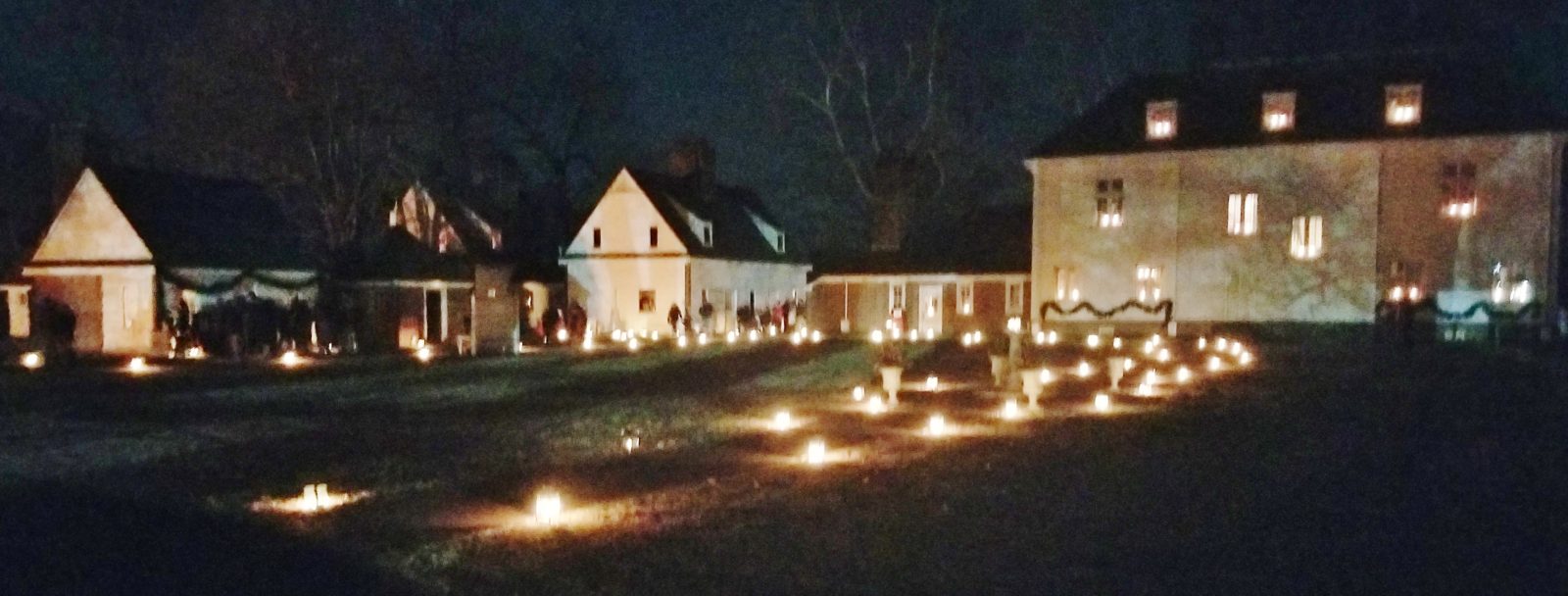The birth, destruction and restoration of “Penn’s Palace”.
A favorite holiday tradition when daughter Genevieve was a child was Holly Night at Pennsbury Manor. To us it epitomized an Old English Christmas at William Penn’s 17th century mansion on a rise over the Delaware River in Falls.
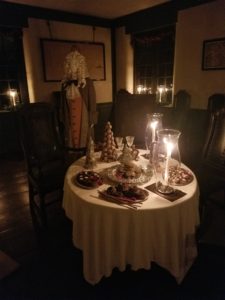 After dark, we’d make the drive out Bordentown Road through the gates of the estate to the 3-story manor house, every window illuminated by candles. Men and women in period costume welcomed us inside for tours and to wander the grounds lit by luminary. A large bonfire down the slope near the river spread warmth as the roving U.S. Steel Chorus from the Fairless Works mill sang Christmas carols, each member dressed in Dickensian costumes with heavy scarves and stove-pipe hats. A stop at the manor’s Bake and Malt House further warmed spirits with hot apple cider and freshly clipped red berries to take home from the estate’s holly trees.
After dark, we’d make the drive out Bordentown Road through the gates of the estate to the 3-story manor house, every window illuminated by candles. Men and women in period costume welcomed us inside for tours and to wander the grounds lit by luminary. A large bonfire down the slope near the river spread warmth as the roving U.S. Steel Chorus from the Fairless Works mill sang Christmas carols, each member dressed in Dickensian costumes with heavy scarves and stove-pipe hats. A stop at the manor’s Bake and Malt House further warmed spirits with hot apple cider and freshly clipped red berries to take home from the estate’s holly trees.
Magical!
It’s hard to believe the mansion and all the outbuildings we were enjoying had vanished by 1864 when the last structure – the malt house – was demolished. For succeeding generations, “Penn’s Palace” was nearly forgotten.
I discovered this recently in an 1853 memoir by Bristol historian William Bache. “Fading remembrances of Pennsbury!” he remarked. “Now quiet, changed and neglected; where once the forest sires of a noble race oft had met in friendly covenant, with the solemnity of worship and the joyfulness of dancing, uniting in council and in sacred compact with the white faces who have supplanted them. . . .
“At Pennsbury, in 1701, on the eve of the second departure of the Proprietor for England (never to return), Governor Penn with a number of his Council held one of the largest Indian councils that had been convened in the Province having closed with music, worship and dancing.
“But now, how changed! And these Lenni Lenape, where are they? Forced from the land that gave them birth, they dwindle from the face of the earth. Yes, they have disappeared, and Pennsbury too.”
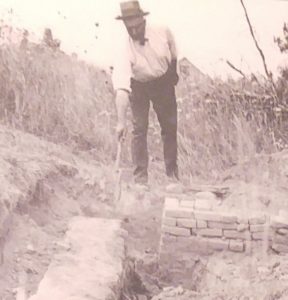
Seventy-five years after Bache’s memoir, Pennsylvania regretted what had happened. The effort to restore Pennsbury began with Charles Henry Moon, leader of the local Quaker community in 1929 and the man who had surveyed a deed transfer of a farm where Pennsbury once stood to the Warner Sand and Gravel company. He showed up at Warner’s headquarters in Tullytown every day for a month, hoping to meet with executives, according to Douglas Miller, the manor’s current site administrator. Warner was mining much of the former 8,000-acre estate, leaving behind today’s Van Sciver Lake on both sides of Bordentown Road. Eventually, Moon got his meeting and a commitment to an earlier promise by Warner to donate 10 acres to the state to create a park where Penn’s home once stood.
The state Legislature formalized the deed transfer in 1932, the 250th anniversary of the Quaker founder’s arrival in America. Historical research got underway immediately to re-conceive Pennsbury Manor. In 1934, historian Albert Cook Meyers discovered the foundation of the original home. Archeologists confirmed the main house had a brick exterior facing the river as reported by Penn in 1685.There were other clues. Metal latches, the color of the tiles, and two inventories in 1687 and 1701 detailing rooms and their use. Letters from the Penn family filled in other details.
The footprint and Civil War-era photo of the malt house helped envision the enlarged compound. Still. it was informed guesswork. In 1938, the state appropriated money to rebuild the mansion on its re-discovered foundation. U.S. Sen. Joseph Grundy of Bristol got the federal government through the Works Progress Administration to chip in cash. Architect R. Brognard Okie who restored the Betsy Ross House and Elfreth’s Alley in Philadelphia drew up blueprints based on what Penn intended. Reconstruction occurred between 1938 and 1940.
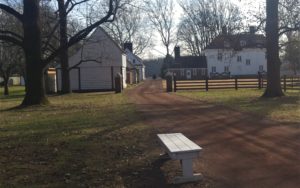
Critics howled, describing the reborn manor as an “abomination”. Newspaper headlines in Philadelphia crowed “the Pennsbury Monstrosity” and “Would William Penn Recognize It?” Todd Galle, Pennsbury Manor’s curator who led me on a recent tour of the home, said we’re lucky to have the building to showcase William Penn’s importance to the country. “After Dec. 7, 1941 and World War II, government stopped rebuilding historic homes like Pennsbury and towns like Williamsburg in Virginia,” Galle noted.
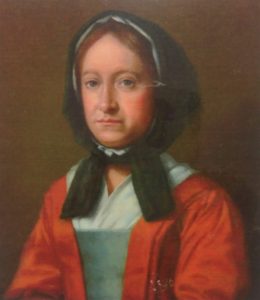
Over the years, the Manor has quadrupled in size to 43 acres, slightly more than what William Penn originally cleared. Lately, a modern visitor’s center with a gift shop, museum and auditorium enhances the story. Next year there will be a year-long celebration of his wife Hannah who presided ably over Pennsylvania for two years after her husband’s death. She kept the colony from returning to British control. In doing so, she also became North American’s first female governor. The year will include many events to mark Pennsbury’s timely “Year of the Woman.”
Sources include William Bache’s account published in 1853..in “Historical Sketches of Bristol the County of Bucks, Anciently Known as Buckingham . . .” and Pennsbury Manor’s website,

